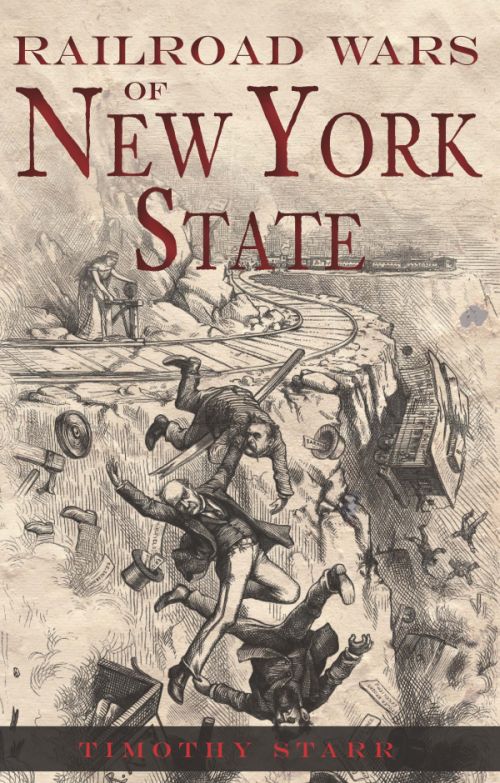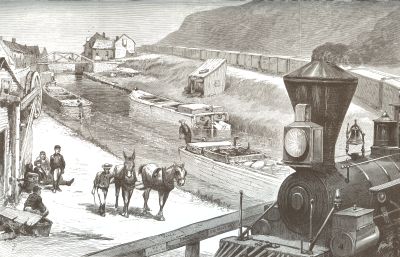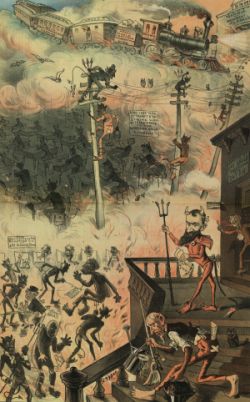|
NEW YORK STATE
A History of its Industries,
Railroads and Inventions

  
|
RAILROAD WARS
Of New York State

|
"Railroad
Wars of New York State" relates the saga of the railroad companies
from their inception through the end of the nineteenth century. In
an age when few regulations existed to check the power of
corporations and the men who ran them, the railroads grew to become
a dominant force in the economy. Despite their sometimes
monopolistic hold over certain towns and cities, they were able to
operate almost without restraint, and their owners were able to
carry out stock market manipulation, treasury plundering, rate wars,
duplicity, court rigging, and legislator bribing on a grand scale.
From the establishment of a new rail system in the face of
competition from the Erie Canal, to fights over control of the
state's two trunk lines, to labor wars against the railroads' own
employees, this exciting book covers the most infamous battles as
the railroads were becoming an essential way of life for millions of
people.
Published
by The History Press, 2012
|
CONTENTS
Introduction
Canal Wars
Rate Wars
Hudson River Wars
The New York Central War
The Susquehanna War
The Great Erie War
Labor Wars

The railroads first had to contend with the
Erie Canal, the most
successful waterway in the United States.

Robber barons like Jay Gould, Daniel Drew, and
Jim Fisk looted
treasuries and manipulated the stock market, wiping out thousands
of investors and impoverishing several railroad companies.

Worker strikes often turned violent and caused
hundreds of thousands
of dollars worth of damage to railroad property.
|
Excerpt from the
introduction:
Here in the
twenty-first century, when just a small part of the population
travels by rail, it is hard to imagine the impact railroads had on
all aspects of life during the 1800s. The spread of railroads to
every corner of the country created a national economy for the first
time, allowing millions of people to travel freely and businesses of
all types to ship goods much more efficiently than ever before. Had
railroad development not taken place, the country’s great size would
have been a liability rather than an asset, as villages and cities
would have been forced to cluster around waterways and coastlines as
thousands of miles of interior lands remained wild and unsettled.
The nation would have remained almost defenseless, subject to
internal conflict and foreign invasion, until the advent of internal
engines more than a century after declaring independence.
Although a few
primitive railroads were built elsewhere in the country first, New
York State opened one of the earliest in 1832 and took the lead in
constructing new ones. The presence of the Erie Canal across the
middle of the state presented a powerful competitor, but the success
of the first railroad from Albany to Schenectady proved to be an
equally powerful incentive for others to put forth their own
charters. Within a year, a veritable deluge of incorporations took
place for rail lines between such population centers as Aurora and
Buffalo, Brooklyn and Jamaica, Schoharie and Otsego, Ithaca and
Geneva, Elmira and Williamsport, and Rochester and Dansville.
The “wars”
fought by the railroads beginning with their inception were constant
and varied. Those included in the following pages were meant to
portray examples of the most famous wars rather than a tedious
rendition of every railroad battle ever fought in New York State. A
broad spectrum was intentionally chosen that hopefully imparts an
informative history of railroading in general as well as the battles
that took place on and around the rails more than a century ago.
|
To order a book by mail, click here
[Home]
|